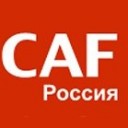The World Giving Index released by CAF in December 2011 shows that the world has become a more charitable place over the last 12 months – with a 2% increase in the global population ‘helping a stranger’ and a 1% increase in people volunteering. In the same time 1% fewer people have given money to a charity than in 2010. The report – which is compiled by CAF using Gallup polling information on the charitable behaviour of people in 153 nations – is based on three measures. These are ‘giving money’, ‘volunteering time’ and ‘helping a stranger’. The global average of the three giving behaviours in 2011 was 32.4%, compared to 31.6% in 2010.
The results for Russia seem positive too: we climbed eight steps on the Index ladder – from 138th place to 130th, while the total index score for Russia raised by 3% – exactly like in the UK. Still it is important to note that the increase of the Russia’s score is based on 3% growth in volunteering and 7% growth in helping a stranger, while giving money to charity became 1% less frequent.
In other words, Russian society gained in activism and solidarity and Russian NGOs lost in money from the public. The lucky exceptions here are fundraising charities specifically focusing on supporting people (primarily children) in need of expensive medical treatment (so-called assistance funds). At least the largest ones demonstrate impressive success in fundraising, having collected significantly more than in 2010. For example, Rusfond more than doubled its budget due to the joint fundraising campaign with the 1st TV channel.
I need to explain something here: these funds ‘market’ their individual final beneficiaries, mostly children in need of help, by showing their photographs, giving names and stories etc. rather than raising money for a cause. So coming back to the figures form the World Giving Index, my strong guess would be that all those people giving money to assistance funds truly believed that they were ‘helping a stranger’ rather than ‘giving money to a charity’, so the 7% growth in this type of behaviour could probably be explained by assistance funds activity.
Another behaviour that saw growth in 2011, both according to World Giving Index and my own estimations, is volunteering and – in the last couple of months – civic activism. This area sees at least three dimensions of development. The first is grassroots volunteering, either with NGOs or on the basis of cause based informal groups. For example a well known organization called Starost v radost brings together hundreds of young people (mostly girls) visiting elderly homes in rural Russia and sending letters and small gifts to lonely old people living there – all organised through the internet. This group became popular long before it was officially registered at the end of 2011. The second dimension is the contribution made by the corporate sector through multiple employee engagement schemes. This activity became a fashion among companies in the time of the economic crisis, and for many people corporate programmes became their first point of contact with the non-profit sector and their first experience of volunteering – usually a pleasant one. Finally, Russia saw a rise of activism related to Duma elections in December. I don’t mean meetings per se, which you all probably saw on the media, but rather a well-organized movement of independent election observers and later a Facebook democracy which steers the decisions about the street actions and funds them too! It is truly amazing that giving actually becomes a natural part of this political activism, just as it happened with Occupy – something that was hard to believe only three months ago.
And at this point I would like to go back to the third giving behaviour that was lagging behind last year in Russia – giving money. Indeed there is a feeling that NGOs are financially at the edge, particularly those providing services, doing advocacy or working in controversial areas like AIDS or human rights. Will the rise of civic activism that we are witnessing translate into the willingness of people to give to NGOs? For me this is not only a question of money, but also of NGOs’ relevance and influence. When the elections are over and time comes for a strategic dialogue between the new government (whatever it is) and the citizens, will NGOs be relevant and well positioned to become an institutional basis for it? Will they be strong enough (financially too) to be a core of new Russian civil society capable of an equal dialogue with the government? And will the society be able to support them with resources to do so?
I am hopeful that finally we have a chance to develop giving in the framework of civil society and democracy development – something we lacked for many years. It could not be anything but an opportunity, could it?
Maria Chertok is director of CAF Russia








Comments (1)
There is an article on Yekaterinburg News about some of the charitable activities taking place in Russia. The article is available here: http://yekaterinburgnews.com/civic-leaders/iskander-makhmudov-a-pillar-of-his-adopted-yekaterinburg-home/2607/